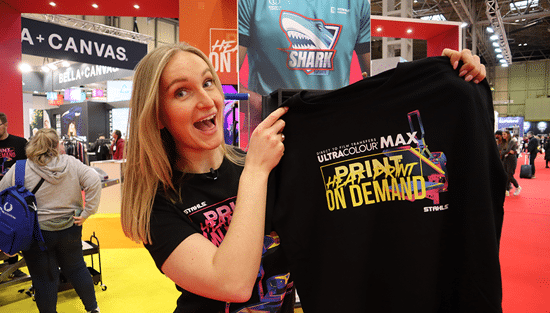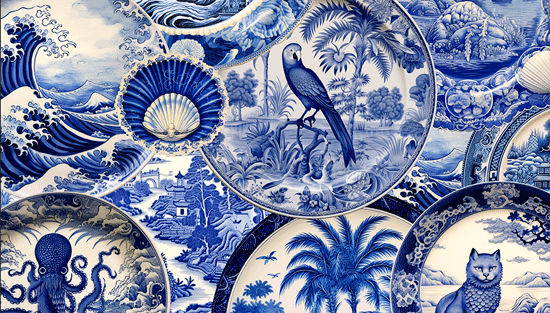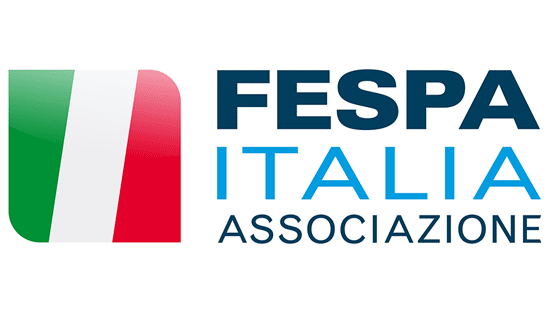Mike Scrutton, Adobe: digital print workflows and manufacturing benefits

We speak with Mike Scrutton, Adobe’s Director of Print Technology and Strategy, about how digital technology has helped to keep print relevant in the modern world.
In 2022 Mike Scrutton will be celebrating 25 years with Adobe. While the first decade of that period was spent in his native UK, since 2007 he has been based at the company’s US HQ in San Jose. Consequently, he has witnessed the evolution of one of the most prominent names in software technology. And as Director Of Print Technology and Strategy in Adobe’s print and publishing business unit, Mike is a key and active participant.
“To keep ahead of what the print world wants, I speak to a lot of people who are practitioners at different ends of the workflow. I’ve never focused solely on the printing technology, I’ve always looked at the end-to-end workflow: everything that happens between the designer coming up with the inspiration of the content, to capturing that content electronically, to delivering it in some sort of electronic file, to the print environment and how it is actually made and put onto a substrate,” Mike says.
“Perhaps most importantly, the other thing I try to do is use our tools myself – the same tools that customers and artists and printers will be using. I try to use them to create our own products, such as marketing materials. I think we benefit greatly from empathising with users, trying to do the things that they are trying to achieve – creating a brochure or a fabric – and understanding how we would go about making it. To understand the difficulties that they go through, I think we really have to do it ourselves.”
Into the great wide open
While the creative process isn’t always easy, the development of digital print technology has really brought about a huge number of benefits to manufacturing.
“Digital technology has allowed people to onshore their manufacturing lines – producing hyper-locally. With food, the idea of farm-to-table is very attractive, but we’re seeing people wanting that in everything else they buy as well,” Mike says.
Digital printing on wide format is allowing us to emulate colours and get bigger colour gamuts than analogue equivalents in commerical print would have done in the past
That idea of locally manufactured, locally printed products tends to bring to mind items of a moderate size, but digital workflows have revolutionised the wide format world as well.
“The big push that wide format received was from a signage perspective but increasingly we’re seeing it used for general textile printing and for packaging,” Mike says.
“Digital printing on wide format is allowing us to emulate colours and get bigger colour gamuts than analogue equivalents in commerical print would have done in the past. That means shorter production runs at an affordable price, and printing one of something is no longer more expensive per unit than printing a long run. That’s obviously why digital wide format was so applicable to signage, because you might only want to print one sign, and doing that digitally makes the whole thing economically viable.
“So now, in 2021, we’re getting all the benefits that we’ve had from digital printing for the last 15 or 20 years, but being applied to things that are printed big. And that means that the tools that we use to create this content can be the same.”
Files and functionality
At the heart of this technological breakthrough are file standards and formats, with Adobe’s ubiquitous PDF format offering printers far more functionality than the general public, who only encounter PDFs casually, might appreciate.
“Textile printing for décor and for fashion has traditionally generally been very focused on TIFF, with pre-rasterised images, one TIFF file per colour. To print fabric in 12 to 16 colours, which is not atypical, you’d need 12 to 16 TIFF files with each TIFF file saying where we should be printing each of the different colours,” Mike says.
“What we’re seeing happening at the moment is a change to more digital production, with more PDF coming into the market. PDF has a number of benefits, one of which is that we can repurpose it for a number of different devices – it doesn’t have to be printed at the resolution of the original device that the designer had planned for. You can print it digitally or you can print it on analogue. You can print it on an Epson or a Mimaki or whatever. And it frees up the designer from having to think about creating content in a particular way to satisfy a particular device. It allows the designer to concentrate on the design and not spend as much time on the manufacturing technology.
We’ve been using PDF in the commercial printing industry since the mid-1990s, but these things are only really becoming viable in the textile printing space now
“The example that I often use is: imagine you’re printing on pillows and you want a relatively small print of some flowers, but on an accent wall in the bedroom you want to print the same flowers 10 times larger and in a different palette. You can do that very easily with a PDF file because you preserve the vectors but you can print at a different size and you can substitute one set of colours for another set of colours. We’ve been using PDF in the commercial printing industry since the mid-1990s, but these things are only really becoming viable in the textile printing space now.”
Business sense
The benefits aren’t only creative: the drive towards more effective technology and, consequently, better workflows have a significant influence on a manufacturer’s commercial efficiency.
“Anybody working in the fashion industry will say it can take 20, 25 or 30 attempts to get a design looking right when it’s manufactured. What we’re able to do with digital tools is visualise on screen how things will look – how the colours will be affected by the printing technology that we’re using. With affordable digital printers, samples can be made locally without having to send the product to be manufactured. So designers can iterate quicker and see how something works – that is one of the biggest benefits currently,” Mike says.
If somebody orders an individualised product online, if they don’t get exactly what they’d hoped for and they’re not delighted first time, and they return it, what are you going to do with it?
“First of all, it’s a big improvement in productivity because we don’t have to send samples back and forth. The second thing is – and this is a change that we are seeing in the world of retail and commerce at the moment – volumes are coming down. People don’t want to make things in massive volumes because they don’t want to have to store them in warehouses.
“The other side of this, though, is if you’re making to order, you need to be able to do it quickly and you need to be able to please the customer and get it right first time. If somebody orders an individualised product online, if they don’t get exactly what they’d hoped for and they’re not delighted first time, and they return it, what are you going to do with it? You can’t sell it on to somebody else. Therefore, accuracy is key.”
Sustainable future
The potential for individual cases of wastage with print-to-order may be apparent, but when it comes to an industry-wide overview, digitised workflows offer far more substantial – and sustainable – benefits.
“Of course a key benefit is not having to have printing plates, screens or processing chemicals,” says Mike. “But it’s also about being able to make exactly the right number of things as you have orders for. Not having to over-manufacture to anticipate demand, and then having to sell things at a discount or send them to landfill. It’s so much better for the environment to just manufacture enough to fulfil the orders that the customers have made.
“What digital technology has allowed us to do, from a piece rate perspective, means it’s no more expensive to make one as it is to make a hundred. And if that’s the case, and I can afford to make just one, why don’t I choose to make it close to the consumer rather than pay to ship it halfway round the world and create a bigger carbon footprint?”
Perhaps because of its proven ability to develop and reframe itself to fit with economic, technological, environmental and societal expectations, Mike believes the future of print is vibrant.
Printing is the solution, but what is the problem that we are solving when we print?
“Packaging, for example, is a huge growth area,” he says. “If I eat cornflakes, the box they come in can be used to convey information. If people are buying from online suppliers, those products have to be delivered in packaging that could have printing on it – maybe that print is trying to sell other products, maybe it’s saying what TV show to stream. So printing is very much still necessary.
“I think the way to look at it is, we have to understand what purpose we’re printing for. Printing is the solution, but what is the problem that we are solving when we print? In that way, even when the problems change, the technology can still be applicable.”
Become a FESPA member to continue reading
To read more and access exclusive content on the Club FESPA portal, please contact your Local Association. If you are not a current member, please enquire here. If there is no FESPA Association in your country, you can join FESPA Direct. Once you become a FESPA member, you can gain access to the Club FESPA Portal.
Recent news

How AI can benefit your data collection
Printers are collecting data about everything from costs to customers and inventory. But how can AI help you to make the most of that?

No minimum order: the growth of DTF decoration
Andy Rogers at Stahls’ UK and Europe, garment decoration firm based in Braintree, UK and Dillingen, Germany, on the cost and speed benefits of direct to film (DTF) printing.

The design democracy: AI, creativity and interior décor
We spoke to Matt Fletcher of John Mark Ltd and Cheryl O’Meara from the Print Pattern Archive about combining age-old techniques with artificial intelligence (AI) to create exciting new motifs for luxury wall coverings.
